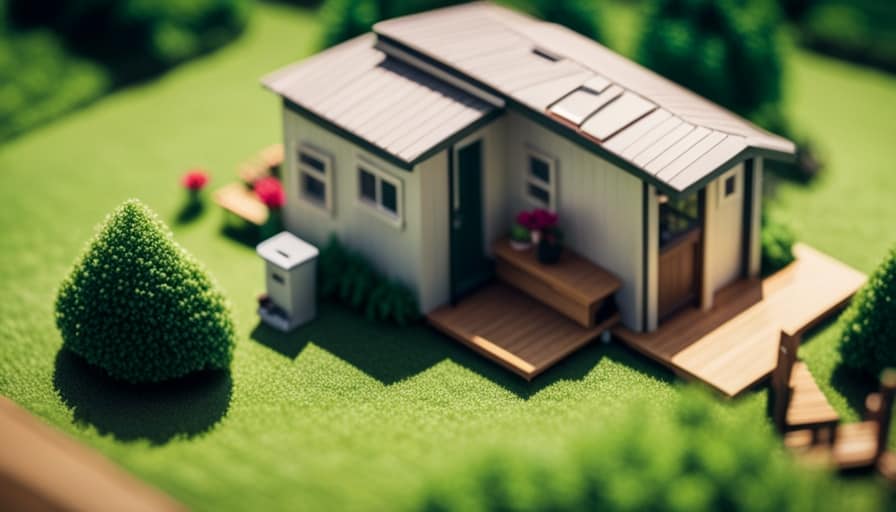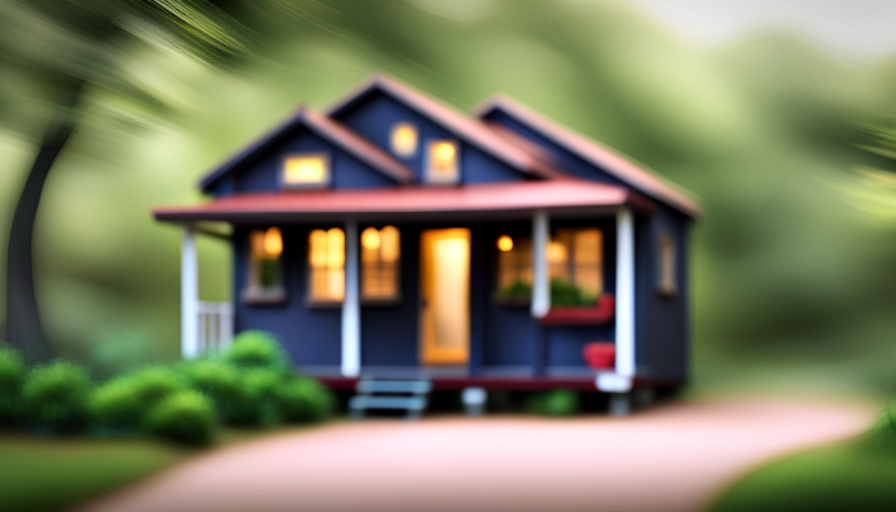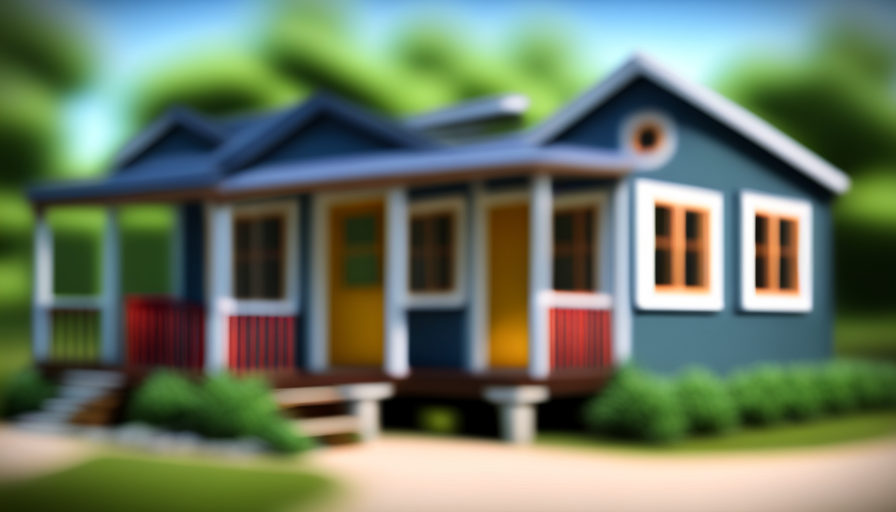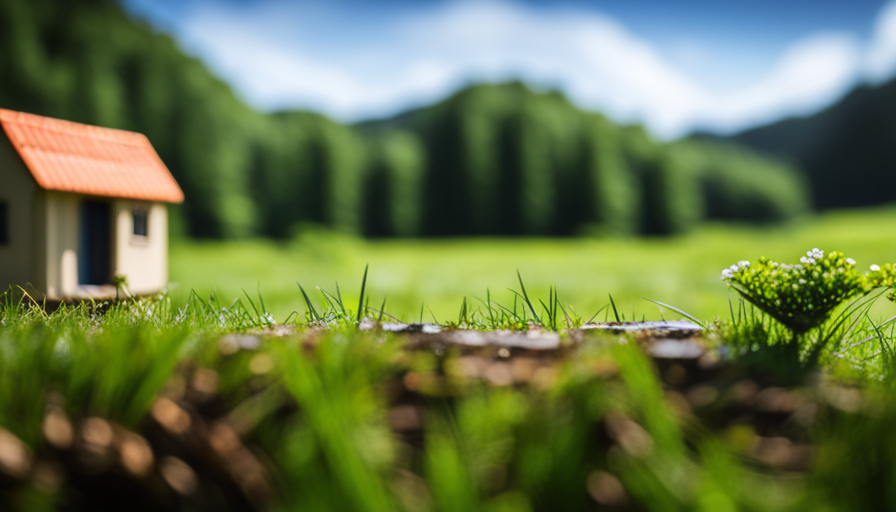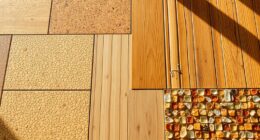I have come across an intriguing idea on how to remove a small house from a fenced backyard. This method includes evaluating the yard’s accessibility, disassembling the house meticulously, mapping out transport routes and permits, and using heavy machinery for lifting and relocation.
With my detailed knowledge and expertise, I’ll guide you through the process of reassembling your tiny house in a new location. Prepare to be amazed by the possibilities of serving others with this practical solution.
Key Takeaways
- Assess the dimensions and obstacles in your yard to determine if the tiny house can be maneuvered without causing damage.
- Explore alternative storage solutions, such as vertical options like shelves or hooks, to maximize space in your closed backyard.
- Consider off-site storage for items that may not fit in the tiny house to optimize space.
- Utilize heavy machinery, like a mobile crane with a telescopic boom, for lifting and moving the tiny house efficiently and safely.
Assessing the Accessibility of Your Closed Back Yard
I really can’t believe how challenging it’s to assess the accessibility of my closed back yard. As I embark on the journey of bringing a tiny house into my space-constrained backyard, evaluating the available space has become crucial.
The first step is to carefully measure the dimensions of the yard, taking into consideration any obstacles such as trees, fences, or uneven terrain. This will help me determine if the tiny house can be maneuvered into the yard without causing damage.
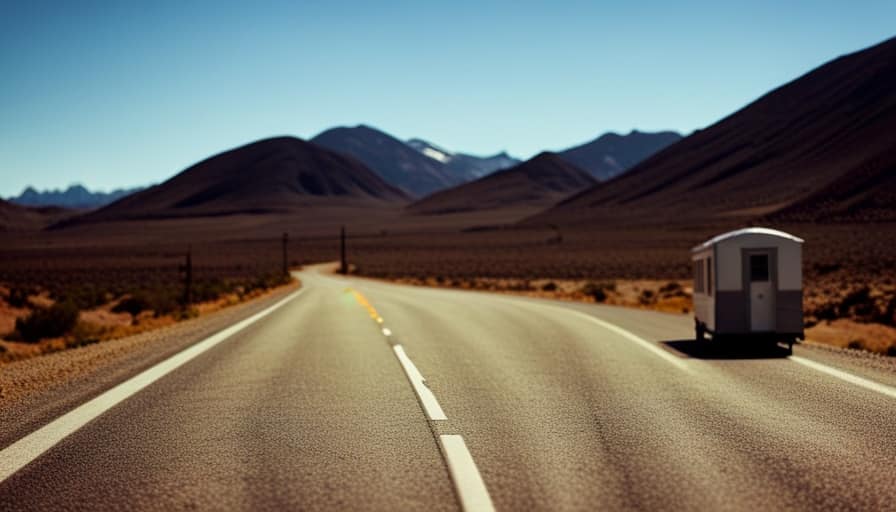
Additionally, I’m exploring alternative storage solutions to make the best use of the limited space. This could include utilizing vertical storage options, such as shelves or hooks, or even considering off-site storage for items that may not fit in the tiny house.
Dismantling Your Tiny House: Tips and Techniques
Taking the time to carefully dismantle your tiny house, while also utilizing proper techniques, can make the process much smoother and more efficient.
When it comes to dismantling techniques, it’s important to start by creating a detailed plan. This plan should outline the order in which you’ll disassemble different parts of your tiny house, ensuring that you don’t miss any steps.
It’s also crucial to label and organize all the components as you take them apart, making it easier to reassemble later. Consider using clear plastic bins or labeled boxes to keep everything organized and easily accessible.
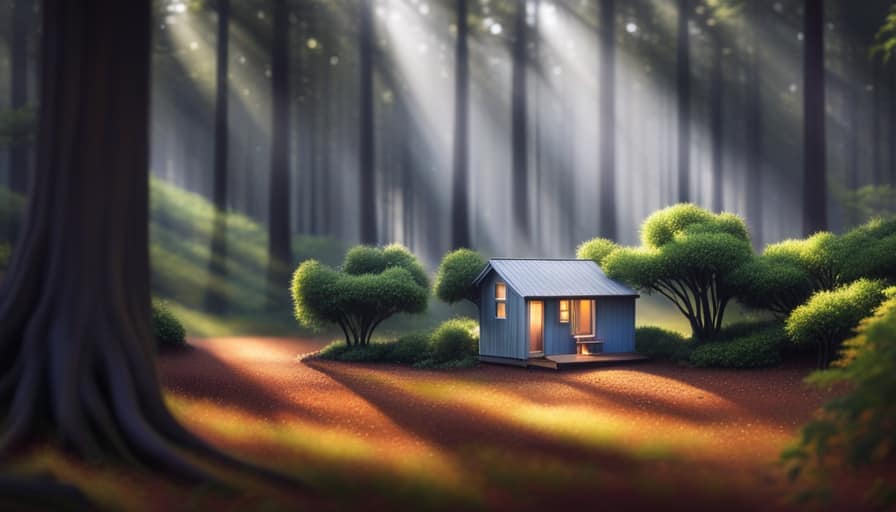
As for storage options, utilizing a secure storage facility can provide peace of mind knowing your tiny house components are safe and protected until you’re ready to rebuild.
Planning for Transportation: Routes and Permits
Finding the most suitable route and obtaining the necessary permits are essential steps in planning the transportation of a tiny house.
When it comes to permits, there are a few key considerations to keep in mind. Firstly, it’s crucial to research and understand the specific permits required in your area for moving a structure of this size.
Secondly, allow ample time for the permit application process, as it can sometimes be lengthy. Lastly, be prepared to provide detailed logistics information, such as the dimensions and weight of your tiny house, to ensure compliance with transportation regulations.

Planning the route involves careful consideration of factors such as road conditions, low bridges, and narrow streets.
By taking the time to navigate the permit process and plan the transportation route, you can ensure a smooth and hassle-free journey for your tiny house.
Now, let’s move on to the next section, where we’ll explore the exciting world of utilizing heavy machinery for lifting and moving your tiny house.
Utilizing Heavy Machinery for Lifting and Moving
Using a crane to lift and move the tiny house out of the closed backyard was a practical solution.
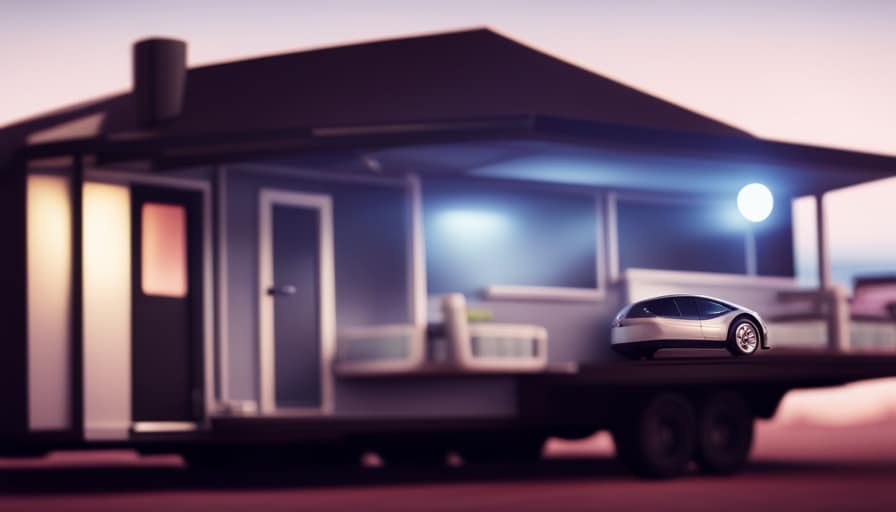
When it comes to heavy machinery, there are various lifting techniques that can be used depending on the specific situation. For instance, a mobile crane with a telescopic boom can be used to lift the tiny house up and over any obstacles in the backyard. This method allows for precise control and maneuverability, ensuring the safe transport of the house.
However, it’s important to consider cost considerations when utilizing heavy machinery. Factors such as the size and weight of the tiny house, as well as the distance it needs to be moved, can impact the overall cost. It’s important to consult with professionals to determine the most cost-effective solution for lifting and moving the tiny house.
Reassembling Your Tiny House in a New Location
One option is to carefully dismantle the tiny house and transport it to the new location for reassembly. This allows for flexibility in rebuilding options and finding a new location that suits your needs. When considering this approach, there are a few important factors to keep in mind:
-
Planning: Create a detailed plan for disassembling the house, labeling each component to ensure easy reassembly.

-
Protection: Take measures to protect the tiny house during transportation, such as wrapping fragile items and securing loose parts.
-
Expertise: Seek the help of professionals or experienced individuals who’ve knowledge of dismantling and reassembling tiny houses.
Frequently Asked Questions
How Much Does It Cost to Dismantle and Transport a Tiny House?
Dismantling and transporting a tiny house can cost anywhere from a few hundred to several thousand dollars. Hiring professionals is more expensive but ensures expertise, while DIY can save money but requires time and effort.
Can I Hire Professionals to Dismantle and Transport My Tiny House?
Hiring professionals for dismantling and transporting a tiny house can save time and effort. The cost of services varies based on factors like distance and complexity, but it’s worth it for a hassle-free experience.

Are There Any Legal Requirements or Permits Needed to Move a Tiny House?
Legal requirements and permits are necessary when moving a tiny house. It’s important to research local zoning laws, obtain permits, and follow any regulations regarding transportation. Consulting professionals can help navigate the process smoothly.
What Are Some Common Challenges Faced When Moving a Tiny House?
When moving a tiny house, challenges can arise. One common challenge is finding suitable transportation options. Ensuring the structural integrity of the house during the move is also crucial. For example, I once had to carefully navigate narrow streets to transport a tiny house.
Can I Move a Tiny House Without Using Heavy Machinery?
To move a tiny house without heavy machinery, you can use alternative methods like using a trailer, dismantling it into smaller parts, or hiring professionals experienced in navigating tight spaces. Careful planning and execution are key to avoid damaging the house.
Conclusion
In conclusion, with careful planning and the right equipment, getting a tiny house out of a closed back yard isn’t only possible but also exciting.

By assessing accessibility, dismantling with precision, planning transportation routes, utilizing heavy machinery, and reassembling in a new location, you can achieve your dream of moving your tiny house with ease.
So, don’t let a closed back yard deter you from embarking on your tiny house adventure. Get ready to make the impossible possible!
I’m Theodore, and I love tiny houses. In fact, I’m the author of Tiny House 43, a book about tiny houses that are also tree houses. I think they’re magical places where imaginations can run wild and adventures are just waiting to happen.
While tree houses are often associated with childhood, they can be the perfect adult retreat. They offer a cozy space to relax and unwind, surrounded by nature. And since they’re typically built on stilts or raised platforms, they offer stunning views that traditional homes simply can’t match.
If you’re looking for a unique and romantic getaway, a tree house tiny house might just be the perfect option.
